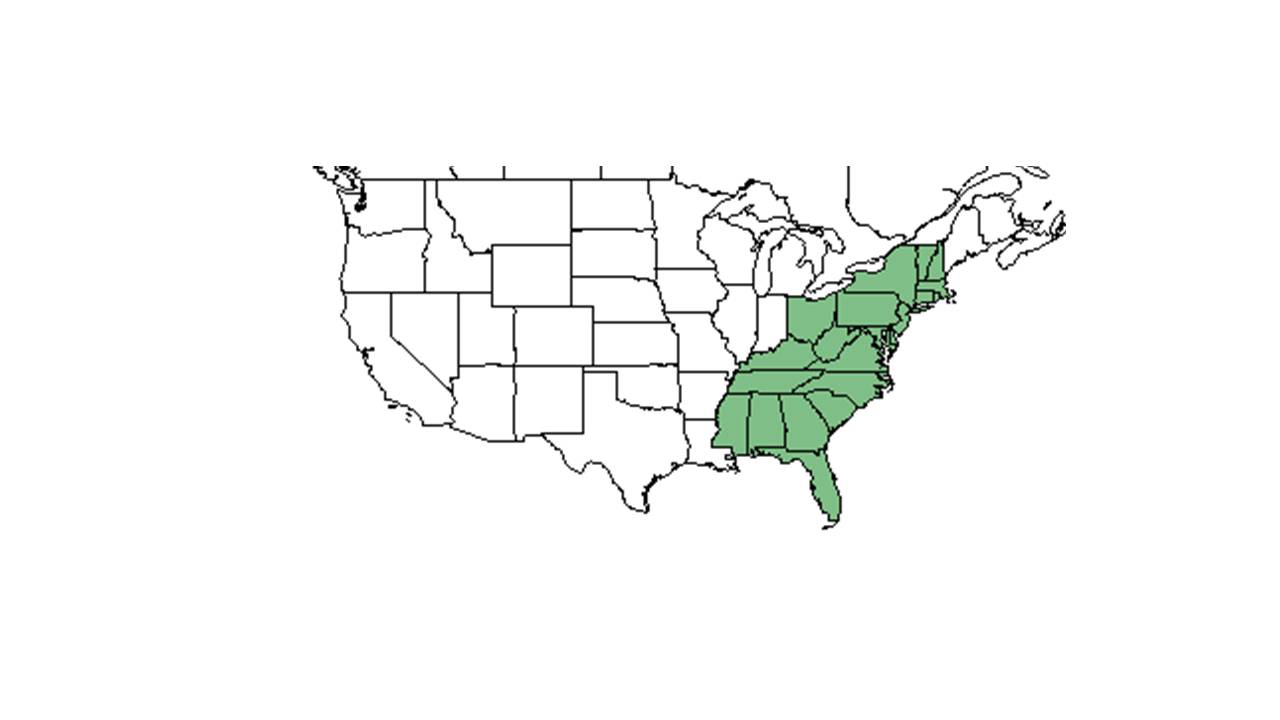Difference between revisions of "Nabalus serpentarius"
(→Conservation and Management) |
Krobertson (talk | contribs) |
||
| Line 30: | Line 30: | ||
==Ecology== | ==Ecology== | ||
===Habitat=== <!--Natural communities, human disturbed habitats, topography, hydrology, soils, light, fire regime requirements for removal of competition, etc.--> | ===Habitat=== <!--Natural communities, human disturbed habitats, topography, hydrology, soils, light, fire regime requirements for removal of competition, etc.--> | ||
| − | In the Coastal Plain in Florida and Georgia, ''N. serpentarius'' can be found in longleaf pine-wiregrass flatwoods, beech magnolia woods, rich loam on steep slopes of wooded sinkhole ravines, rich mesic woodlands of shallow ravines, wooded ravine bottoms, dry woods, clay hillsides, clay loam in open stands, mixed pine-hardwood stands, open pine-oak woodlands, hardwood forest bluffs, drying loamy sand along mesic woodlands with limestone outcrops, subxeric woodlands on slopes of rivers, and frequently burned mature longleaf pine-wiregrass community | + | In the Coastal Plain in Florida and Georgia, ''N. serpentarius'' can be found in longleaf pine-wiregrass flatwoods, beech magnolia woods, rich loam on steep slopes of wooded sinkhole ravines, rich mesic woodlands of shallow ravines, wooded ravine bottoms, dry woods, clay hillsides, clay loam in open stands, mixed pine-hardwood stands, open pine-oak woodlands, hardwood forest bluffs, drying loamy sand along mesic woodlands with limestone outcrops, subxeric woodlands on slopes of rivers, and frequently burned mature longleaf pine-wiregrass community. <ref name="FSU Herbarium">Florida State University Robert K. Godfrey Herbarium database. URL: [http://herbarium.bio.fsu.edu http://herbarium.bio.fsu.edu]. Last accessed: July 2015. Collectors: James R. Burkhalter, Loran C. Anderson, P. L. Redfearn, Robert K. Godfrey, R. S. Mitchell, Robert Kral, Rodie White. States and Counties: Florida: Escambia, Gadsden, Jackson, Jefferson, Leon, Liberty, Okaloosa, Santa Rosa, Wakulla, Washington. Georgia: Grady, Thomas. Compiled by Tall Timbers Research Station and Land Conservancy.</ref> It can also be found along sidewalks. |
===Phenology=== <!--Timing off flowering, fruiting, seed dispersal, and environmental triggers. Cite PanFlora website if appropriate: http://www.gilnelson.com/PanFlora/ --> | ===Phenology=== <!--Timing off flowering, fruiting, seed dispersal, and environmental triggers. Cite PanFlora website if appropriate: http://www.gilnelson.com/PanFlora/ --> | ||
| − | Flowering and fruiting have been observed in October | + | Flowering and fruiting have been observed in October. <ref name="FSU Herbarium"/> |
<!--===Seed dispersal===--> | <!--===Seed dispersal===--> | ||
| Line 49: | Line 49: | ||
==References and notes== | ==References and notes== | ||
| − | |||
Revision as of 15:12, 3 August 2016
| Nabalus serpentarius | |
|---|---|

| |
| Photo by John R. Gwaltney, Southeastern Flora.com | |
| Scientific classification | |
| Kingdom: | Plantae |
| Division: | Magnoliophyta – Flowering plants |
| Class: | Magnoliopsida – Dicotyledons |
| Order: | Asterales |
| Family: | Asteraceae ⁄ Compositae |
| Genus: | Nabalus |
| Species: | N. serpentarius |
| Binomial name | |
| Nabalus serpentarius Pursh | |

| |
| Natural range of Nabalus serpentarius from USDA NRCS Plants Database. | |
Common name: cankerweed
Contents
Taxonomic notes
Synonyms: Prenanthes serpentaria Pursh; Nabalus serpentarius (Pursh) Hooker; Nabalus integrifolius Cassini
Description
A description of Nabalus serpentarius is provided in The Flora of North America.
Distribution
Ecology
Habitat
In the Coastal Plain in Florida and Georgia, N. serpentarius can be found in longleaf pine-wiregrass flatwoods, beech magnolia woods, rich loam on steep slopes of wooded sinkhole ravines, rich mesic woodlands of shallow ravines, wooded ravine bottoms, dry woods, clay hillsides, clay loam in open stands, mixed pine-hardwood stands, open pine-oak woodlands, hardwood forest bluffs, drying loamy sand along mesic woodlands with limestone outcrops, subxeric woodlands on slopes of rivers, and frequently burned mature longleaf pine-wiregrass community. [1] It can also be found along sidewalks.
Phenology
Flowering and fruiting have been observed in October. [1]
Conservation and management
Cultivation and restoration
Photo Gallery
References and notes
- ↑ 1.0 1.1 Florida State University Robert K. Godfrey Herbarium database. URL: http://herbarium.bio.fsu.edu. Last accessed: July 2015. Collectors: James R. Burkhalter, Loran C. Anderson, P. L. Redfearn, Robert K. Godfrey, R. S. Mitchell, Robert Kral, Rodie White. States and Counties: Florida: Escambia, Gadsden, Jackson, Jefferson, Leon, Liberty, Okaloosa, Santa Rosa, Wakulla, Washington. Georgia: Grady, Thomas. Compiled by Tall Timbers Research Station and Land Conservancy.